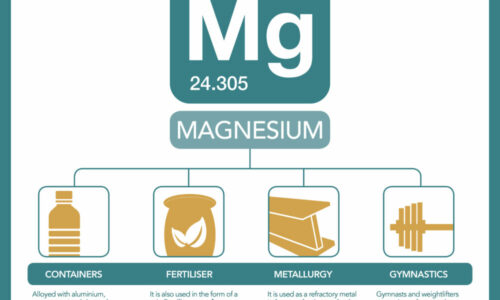The story goes that, back in 1618, a farmer from Epsom in England wanted to give his cows water from a nearby well, but they refused to drink it due to its bitter flavour. Nevertheless, the water seemed to heal the scrapes and rashes on the animals’ skin. The farmer from Epsom had just discovered magnesium sulfate. It wasn’t until 1775 that magnesium (MG) was recognised as a chemical element, and 1808 that it was converted into metal for the first time. Since then, it has become an essential element within the industry, which is why it is the protagonist of the fourth article in this series of posts in commemoration of the International Year of the Periodic Table.
One of the characteristics that make magnesium such an important material for the industry is its abundance in nature and how easy it is to extract. “It is the third most abundant structural metal in the Earth’s crust”, explains Olga Juste, commercial technician for Grupo Barcelonesa. “It is mainly obtained from rocky minerals such as dolomite and magnesite, and its extraction doesn’t require complicated chemical processes, nor is it very expensive, economically speaking”, Juste emphasises.
“Due to its low weight and capacity to form alloys that are highly mechanically strong” it is very appreciated as a metal, states the Barcelonesa technician. “It has a density that is only two-thirds that of aluminium”, Juste specifies. Alloyed with aluminium, copper, or zinc, magnesium is often used for construction or products for which weight savings are important. “For example, we can find it in beverage containers or automotive parts”, the expert states.
Another widespread use of magnesium is in the form of salts. “Fertiliser manufacturers add magnesium in the form of magnesium sulfate to their formulas because it is an essential nutrient in agriculture for growing crops”, Juste explains. Magnesium is also widely used as magnesium oxide as a “refractory material in furnaces because it doesn’t melt down until it reaches very high temperatures”, the Barcelonesa spokesperson expresses. Specifically, the melting point for this salt is 2852 degrees. Those furnaces are used to produce iron and steel, non-ferrous metals, glass and cement.
Also in the form of salts, magnesium is used as a reducing agent to obtain uranium and other metals. Gymnasts and weightlifters carry a bag of magnesium powder in the form of magnesium carbonate that they spread on their hands to improve their grip of the items in question. Other uses include photographic flashes, pyrotechnics, and incendiary devices, due to the light they radiate upon combustion Lastly, Olga Juste highlights its importance for the elimination of fluoride in waste water treatment.
Its widespread uses, excellent availability, and low density make magnesium a chemical element that is difficult to substitute in the industry.


